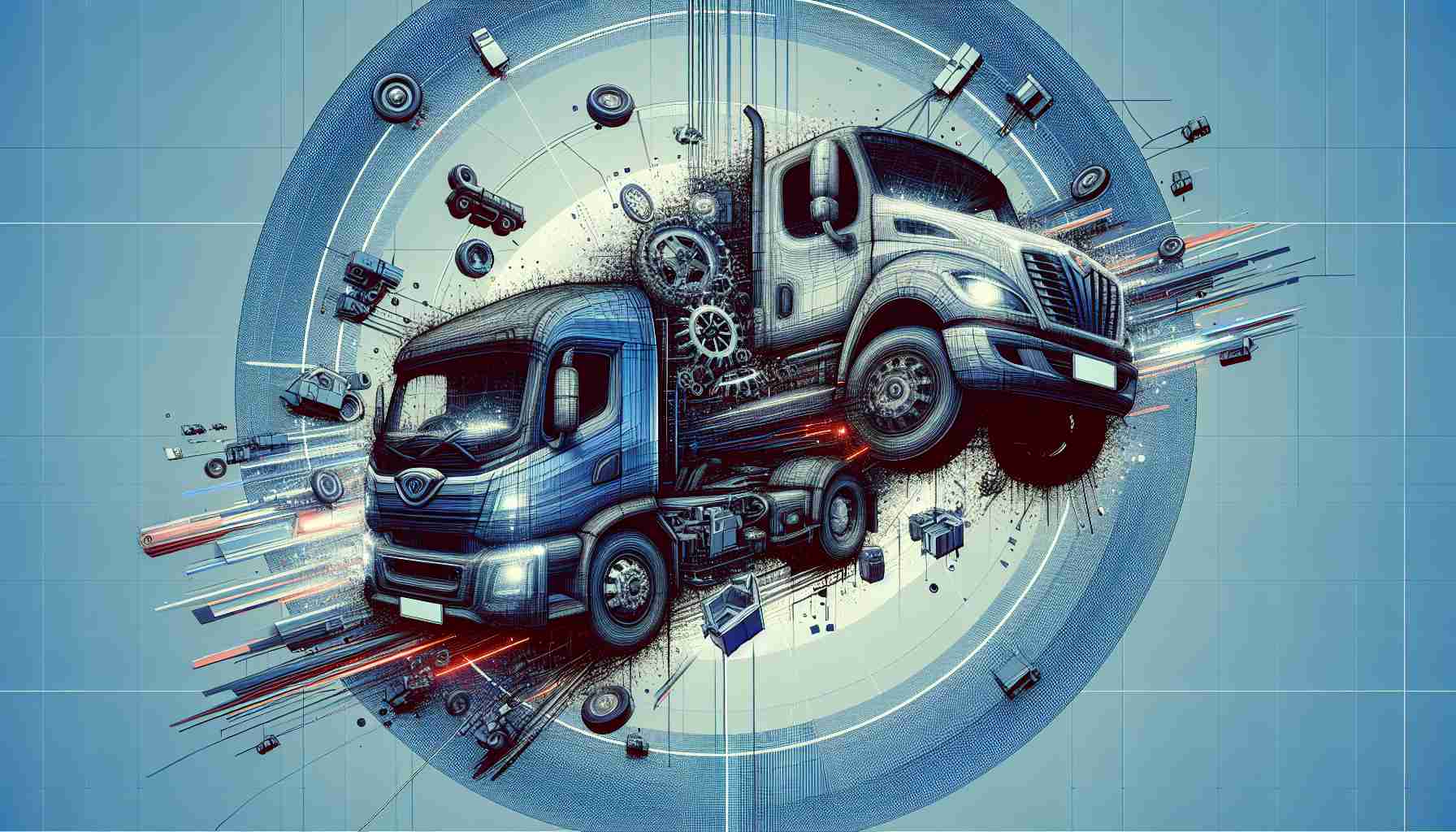Intriguing Developments in Electric Vehicles
In Hyderabad, a recent incident involving the Mahindra BE 6 electric SUV has sparked intense discussions about modern vehicle technology. The SUV was reportedly unable to start following a minor collision with a Datsun car, causing concern among vehicle enthusiasts about the reliability of advanced features in today’s cars.
Reports indicate that the BE 6 suffered minor scratches while the Datsun sustained noticeable damage to its front end. Curious spectators captured the aftermath, leading to a viral video questioning the resilience of high-tech vehicles. Many online commenters speculated that the collision damaged the SUV’s sensors, rendering it immobile.
However, Mahindra responded strongly, asserting that claims about sensor failure were unfounded. The carmaker clarified that the vehicle’s inability to move was not due to any sensor malfunction, emphasizing that the BE 6 was promptly moved after the collision for safety reasons.
The Mahindra BE 6, one of the latest electric offerings from the manufacturer, comes equipped with impressive features, including two battery options capable of achieving ranges up to 682 kilometers. It has gained attention for its top-notch safety ratings and advanced driver-assistance systems.
As the debate continues, the Mahindra BE 6 highlights the growing scrutiny of electric vehicles in real-world scenarios. Stay tuned as this conversation evolves!
The Broader Implications of Electric Vehicle Developments
The recent incident involving the Mahindra BE 6 electric SUV highlights a critical juncture in the evolution of electric vehicles (EVs) and their role in shaping societal and cultural attitudes towards innovative transportation technology. The concerns raised about reliability not only affect consumer confidence but also influence manufacturers’ reputations in a rapidly expanding market. With EV sales projected to reach over 30% of total vehicle sales by 2030, such events can significantly alter public perception and investment decisions within the global automotive industry.
Moreover, the evolving narrative surrounding high-tech vehicles underscores a vital aspect of modern society: the balance between advancement and vulnerability. As these machines become increasingly sophisticated, any breakdown—whether perceived or real—can spark skepticism and fear among potential buyers. This has implications not just for manufacturers like Mahindra, but also for policies surrounding automation and vehicle safety technology, as regulatory bodies may need to reassess standards in light of public apprehensions.
On an environmental level, the accelerated adoption of EVs like the BE 6 may impact long-term energy strategies and sustainability efforts. While electric vehicles aim to reduce reliance on fossil fuels, they also raise questions about the source of electricity production and battery disposal methods. As we advance into a future that hinges on electrification, the groundwork laid by incidents such as the BE 6 collision could shape environmental policy, consumer habits, and technological innovation alike.
With these developments, the conversation around electric vehicles is far from static, promising to influence cultural perceptions and the global economy in unforeseen ways.
The Mahindra BE 6: What You Need to Know About Its Recent Incident and Impressive Features
Introduction
The recent incident involving the Mahindra BE 6 electric SUV in Hyderabad has stirred up considerable discussions surrounding the reliability and resilience of modern electric vehicles. With rumors circulating about sensor malfunctions following a minor collision, there are multiple facets to explore regarding the technology, safety, and performance of the Mahindra BE 6 and electric vehicles in general.
Overview of the Mahindra BE 6
The Mahindra BE 6 is part of the manufacturer’s new lineup of electric vehicles, designed to offer high efficiency and advanced technology. Some of its standout features include:
– Battery Options: The BE 6 offers two battery configurations, with ranges reaching up to 682 kilometers on a single charge. This positions it competitively in the electric SUV market.
– Safety Ratings: The vehicle has received top-notch safety ratings, aiming to instill confidence in consumers regarding its structural integrity and protective features.
– Advanced Driver-Assistance Systems (ADAS): The BE 6 is equipped with state-of-the-art technologies designed to enhance driving safety and convenience.
Pros and Cons of the Mahindra BE 6
Pros:
– Long Range: With an impressive range of up to 682 kilometers, the BE 6 can easily accommodate long-distance travels.
– High Safety Standards: Equipped with advanced safety features, it aims to protect occupants in case of an accident.
– Technological Advancements: The integration of modern driver-assistance technologies enhances the driving experience.
Cons:
– Perception of Reliability: Recent events have led to questions about the durability of technology in real-world scenarios, potentially affecting consumer confidence.
– Potential Sensor Vulnerabilities: As seen in the recent incident, minor collisions may lead to significant operational issues, raising concerns about sensor robustness.
The Incident: What Happened?
The collision between the Mahindra BE 6 and a Datsun vehicle triggered discussions about the vulnerability of electric vehicles. While the Datsun suffered a more considerable impact, observers speculated that the sensors in the BE 6 may have been damaged, rendering the vehicle immobile. However, Mahindra has firmly rebutted these claims, stating that the car was moved for safety and the incident was not indicative of a sensor failure.
Insights on the Electric Vehicle Market
The Mahindra BE 6 incident shines a light on the ongoing debate about the reliability of advanced electric vehicles amidst real-world conditions. As the popularity of EVs grows, consumers and manufacturers alike must address concerns about their dependability and the implications of modern technology on traditional vehicular performance.
Future Trends and Predictions
As the electric vehicle market continues to expand, manufacturers will likely focus on enhancing durability and efficiency. Trends such as improved battery technology, more resilient materials, and enhanced safety features will become essential as consumers demand vehicles that can withstand not only the rigors of driving but also the challenges of everyday incidents.
Conclusion
The Mahindra BE 6 serves as a pivotal case study in the evolving discourse on electric vehicles. While incidents like the one in Hyderabad raise pertinent questions, they also emphasize the need for continuous innovation and improvement in vehicle technology. As the electric vehicle landscape continues to mature, it will be fascinating to see how manufacturers address these challenges to meet consumer expectations.
For more information on electric vehicles, visit Mahindra’s official site.








